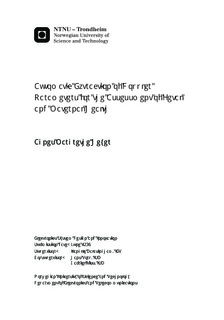Automatic Extraction of Doppler Parameters for the Assessment of Fetal and Maternal Health
Master thesis
Permanent lenke
http://hdl.handle.net/11250/2371018Utgivelsesdato
2014Metadata
Vis full innførselSamlinger
Sammendrag
In developing countries, the availability of personnel with training in the use of ultrasound devices and the availability of conventional ultrasound equipment may be very limited. It is therefore beneficial to automate the diagnostic features of an ultrasound device.The Umoja project is an initiative by The National Center of Fetal Medicine (NCFM) at St. Olavs Hospital and the Norwegian University of Science and Technology (NTNU). The technical part of this project involves the development of the Umoja ultrasound system, a tablet-based ultrasound machine with an intuitive user interface. An automatic heart rate detection algorithm was developed in order to be implemented on the Umoja system in the future. The algorithm was developed using Doppler IQ data from two patients. Methods using only high frequencies as well as only low (tissue) frequencies were evaluated.Manual heart rate measurements were made in order to verify the accuracy of the algorithm.The automatic calculations differed from the manual measurements on average up to one BPM, with a negative bias. When using only low frequent tissue data, the results were improved for heart data which had not been filtered by the scanner.Most of the rejected calculations were found in segments with low power.Based on the Matlab timing results and the accuracy of the heart rate calculations, the algorithm appears to represent a viable method for heart rate detection on a low-cost ultrasound device.
